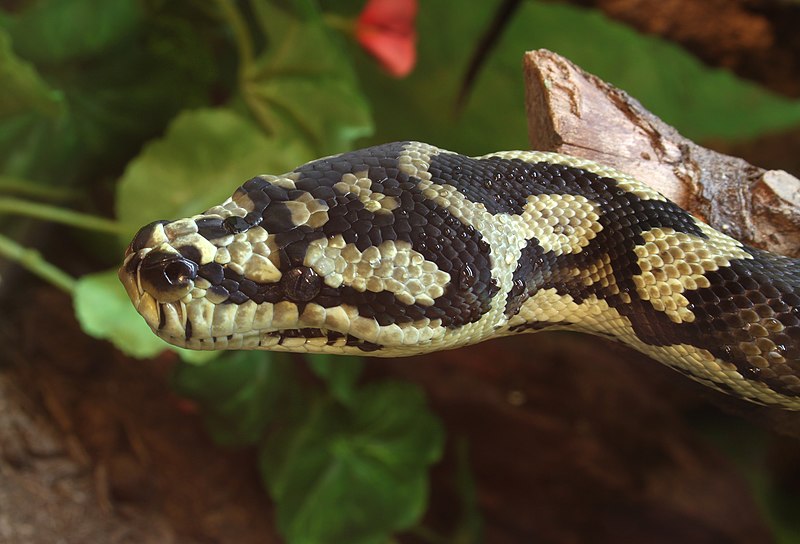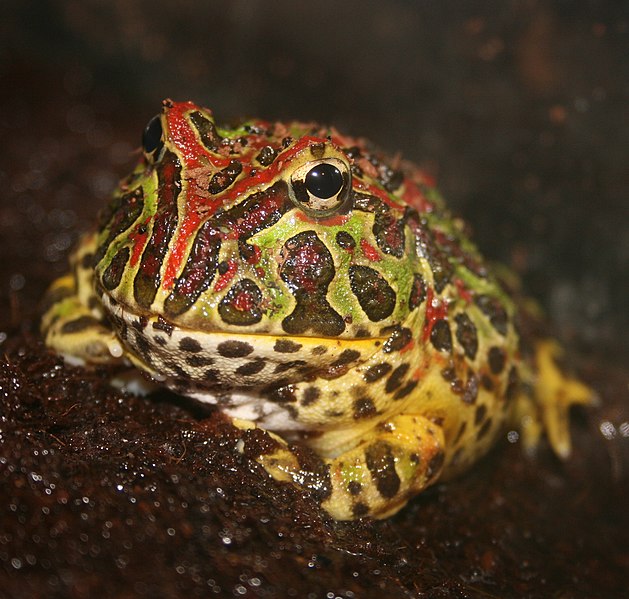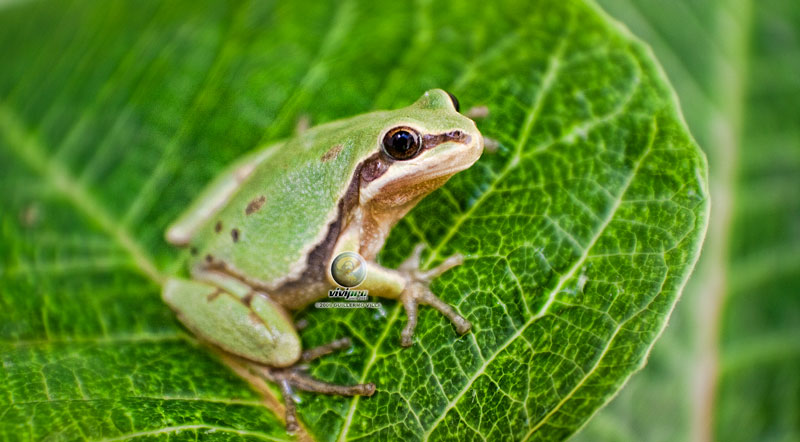 Inclusion Body Disease (IBD), or “Stargazing”, is an incurable ailment that afflicts captive Boa Constrictors, Ball Pythons and related snakes (please see below for species list). As a child with a burgeoning snake collection, I was warned about it by older keepers, and then faced the perplexing condition as I began to work for animal importers and zoos. Always, the scenario remained the same – once symptoms appeared, the snake died. In zoo collections, much time and expense was spent in testing snakes that had been exposed to IBD, with euthanasia being the usual course of action for those found to be positive. However, snake keepers now have cause for guarded optimism – a ground-breaking finding published this week (August, 2012) may pave the way for a treatment. The sequence of events leading up to the discovery involves pet owners, gene-sequencing competitions and a host of twists and turns, and shows that alert, dedicated snake enthusiasts can make vital contributions to conservation and research. Read More »
Inclusion Body Disease (IBD), or “Stargazing”, is an incurable ailment that afflicts captive Boa Constrictors, Ball Pythons and related snakes (please see below for species list). As a child with a burgeoning snake collection, I was warned about it by older keepers, and then faced the perplexing condition as I began to work for animal importers and zoos. Always, the scenario remained the same – once symptoms appeared, the snake died. In zoo collections, much time and expense was spent in testing snakes that had been exposed to IBD, with euthanasia being the usual course of action for those found to be positive. However, snake keepers now have cause for guarded optimism – a ground-breaking finding published this week (August, 2012) may pave the way for a treatment. The sequence of events leading up to the discovery involves pet owners, gene-sequencing competitions and a host of twists and turns, and shows that alert, dedicated snake enthusiasts can make vital contributions to conservation and research. Read More »
Category Archives: Reptile and Amphibian Health
Feed SubscriptionMalayan and Kuhl’s Flying Geckos – Breeding and Care
 Like most lizard enthusiasts, I was mesmerized by Flying Geckos at first glance. Early on, both Malayan and Kuhl’s Flying Geckos (Ptychozoon lionotum and P. Kuhli) were rare in the trade, but by the early 1980’s I found them readily available and integrated both into a Southeast Asian exhibit I maintained at the Bronx Zoo. I had some breeding success, but today’s stock remains largely wild caught. Because they are both inexpensive and bizarre, Flying Geckos are often purchased by relatively inexperienced keepers. But while they can be hardy, prolific breeders, Flying Gecko ownership requires some forethought; hopefully the following information will prepare you.
Like most lizard enthusiasts, I was mesmerized by Flying Geckos at first glance. Early on, both Malayan and Kuhl’s Flying Geckos (Ptychozoon lionotum and P. Kuhli) were rare in the trade, but by the early 1980’s I found them readily available and integrated both into a Southeast Asian exhibit I maintained at the Bronx Zoo. I had some breeding success, but today’s stock remains largely wild caught. Because they are both inexpensive and bizarre, Flying Geckos are often purchased by relatively inexperienced keepers. But while they can be hardy, prolific breeders, Flying Gecko ownership requires some forethought; hopefully the following information will prepare you.
Description
The 7 Flying Geckos in the genus Ptychozoon are among the most unique of the world’s 900+ gecko species. Both the Malayan and Kuhl’s reach 6-8 inches in length and are distinguished by skin folds (along the head, flanks and toes) that enable them to glide through the air. A heavily-serrated tail assists in breaking up their outline. In overall appearance, I can best describe them as “amazingly bark-like”.
Their color varies through a wide range of tans, grays and browns, and the skin is marked with an array of blotches and stripes. Malayan and Kuhl’s Flying Geckos are difficult to differentiate by eye; the Kuhl’s tongue is often tipped in black, but I cannot say whether this always holds true.
Range and Habitat
The Malayan Flying Gecko inhabits Myanmar, Thailand, India, Malaysia and neighboring islands. The range of Kuhl’s Flying Gecko extends from southern Thailand through Java, Sumatra, Malaysia, Borneo and Sulawesi, and overlaps that of its cousin extensively. Whether or not they hybridize, or utilize different niches within the same range, has not been researched. Other geckos are, however, known to partition habitats in species-rich areas; this article describes an interesting study carried out on Borneo.
Flying Geckos favor rainforests and other humid, densely-foliated habitats. However, they have colonized farms and human habitations, and it is from such areas that most are collected.
Captive Care
Malayan and Kuhl’s Flying Geckos may be kept and bred under similar conditions. As most in the trade are wild-caught, stress, mites and internal parasites are a major concern. As concerns medication, I’ve found them to be quite delicate; be sure that you use a well-experienced veterinarian to examine all new arrivals.
The Terrarium
Although wild-caught females may initially produce eggs, sustained captive breeding is only possible if the appropriate environment and diet is provided. A spacious terrarium – a 20-30 gallon tank for a trio – is essential. “Tall” style aquariums are ideal. Flying Geckos spend most of their time on tree trunks, where their camouflage may be used to great advantage, and will be stressed if forced to use other resting sites. Corkbark or native tree bark must be available, and the cage should be densely-planted (live plants are best). Flying Geckos will not thrive in bare enclosures.
Temperature, Humidity and Light
Humidity should be maintained at 75-80% for most of the year (see “Breeding”), with a temperature gradient of 75-85 F. Nighttime temperatures can dip to 70 F. A mix of sphagnum moss and a forest bedding, serves well as a substrate.
Although Flying Geckos are nocturnal, wild individuals often spend their days in open situations, on tree trunks, and may therefore be exposed to UVB. Low doses of UVB, as provided by a ZooMed 2.0 bulb, are likely beneficial. Overly-bright environments should be avoided, so choose plants that do well in low light (pothos, snake and cast iron plants). Incandescent heat bulbs can be used to maintain temperatures; red/black night bulbs (which will assist in nighttime observations) or ceramic heater-emitters can be used after dark.
Diet
Flying Geckos specialize in hunting flying and arboreal insects, and will not fare well on crickets alone. Housefly cultures, silkworms, roaches, moths and other insects are essential to their well-being. The comments in this article on Red-Eyed Treefrog Diets are largely applicable; please write in if you have any questions on this critical aspect of husbandry.
Breeding
Mature males may be distinguished from females by their pre-anal pores and the two scaly skin-folds that outline the cloaca.
Males fight savagely, and cannot be housed together. A single male may be kept with multiple females. Gecko skin is delicate, and bite injuries may occur during courtship and copulation; check also for dominance battles among females.
Stimulating Reproduction
In the wild, breeding likely extends through much or all of the rainy season (March to May through October, depending upon locale). Increasing the frequency and duration of daily misting in the spring will encourage captives to come into breeding condition. Novel food items and increased dietary variety should also be introduced at this time. Some have reported that removing and re-introducing a male will stimulate interest.
Lowering temperature and humidity slightly during the fall and winter may also be useful, but is not critical (please write in for details).
The Eggs
Gravid female swell noticeably, and their 2 eggs will be visible through the skin in time. A well-fed female may produce 3, or possibly more, clutches of 2 eggs each. I’ve recorded inter-clutch intervals of 2-3 weeks, but this time period is likely affected by many factors.
Eggs are affixed to bark, glass or stout plant leaves. Be sure to provide ample nesting sites that can be removed for incubation, as the eggs are often broken during attempts to peel them from the deposition surface. Corkbark slabs are ideal, as they can be cut to fit incubators if need be.
Incubation
Suitably-sized plastic terrariums, with the ventilation ports sealed, make ideal incubators. Eggs under my care generally hatched in 60-80 days at 82-85 F, but temperatures of 70-90 F, and incubation times of 30-90 days, have been reported.
Eggs deposited on glass are difficult to remove; I’ve incubated House and Day Gecko eggs on glass by affixing a cup containing damp sphagnum moss over the eggs, but this is not an ideal situation.
The Young
Hatchlings average a bit over 2 inches in length and may be reared on fruit and other flies, small crickets and roaches, silkworms, moths, termites and similar insects (please see diet comments above).
Further Reading
Gecko Gliding Explained: excellent, comprehensive articles with photo of geckos “in flight”
Kuhl’s Flying Gecko: great photos
Ptychozoon kuhli image referenced from wikipedia and originally posted by Manuel Werner
Argentine/Ornate Horned Frog Care: the “Pac Man Frog” and its Relatives
 The Argentine or Ornate Horned Frog (Ceratophrys ornata) may be the world’s most popular amphibian pet. Dubbed the “Pac Man Frog” due to a resemblance to the large-mouthed video game character, it is beautifully colored and “charmingly” pugnacious in disposition. Despite their size (females may be compared to salad bowls; males are much smaller), Horned Frogs require relatively little space and are an ideal choice for those seeking an interesting pet that may live to age 20 or more. Albinos and other unique color morphs, as well as hybrids between related species, are available.
The Argentine or Ornate Horned Frog (Ceratophrys ornata) may be the world’s most popular amphibian pet. Dubbed the “Pac Man Frog” due to a resemblance to the large-mouthed video game character, it is beautifully colored and “charmingly” pugnacious in disposition. Despite their size (females may be compared to salad bowls; males are much smaller), Horned Frogs require relatively little space and are an ideal choice for those seeking an interesting pet that may live to age 20 or more. Albinos and other unique color morphs, as well as hybrids between related species, are available.
Natural History
Argentine Horned Frogs inhabit savannas (grasslands) in Argentina, Uruguay and Brazil. In some regions, they become dormant during cool, dry periods.
Seven related species have been described. Of these, the Cranwell’s or Chaco Horned Frog (Ceratophrys cranwelli) is most frequently seen in the pet trade. The following information can be applied to its care. The Surinam Horned Frog (C. cornuta) bears the longest “horns” of all (please see photo). Read More »
Reptile and Amphibian Conservation in the USA – 2012 Update
 The global extinction crisis faced by amphibians has been much in the news in recent years, as have threats to sea turtles, Madagascar’s tortoises, Asia’s freshwater turtles and other long-suffering groups. In the USA, a number of reptile and amphibian species are also in dire straits despite, in some cases, federal protection. I hope this article inspires both hope and action in my many conservation-minded readers.
The global extinction crisis faced by amphibians has been much in the news in recent years, as have threats to sea turtles, Madagascar’s tortoises, Asia’s freshwater turtles and other long-suffering groups. In the USA, a number of reptile and amphibian species are also in dire straits despite, in some cases, federal protection. I hope this article inspires both hope and action in my many conservation-minded readers.
Unprecedented Agreement May Help 757 Species
Following a slew of lawsuits by the Center for Biological Diversity (CBD), the Federal government has agreed to speedily consider protecting an additional 757 native species under the Endangered Species Act (ESA). The CDB employs an attorney who deals solely with amphibians and reptiles, and the agreement is said to be “airtight” and legally enforceable.
This agreement is an important step, as the ESA is our most powerful wildlife law. Indeed, ESA listings have proven vital to the continued survival of many species. For example, a recent CBD study of 110 ESA-protected species showed that 90% of them were recovering “on time”, according to the goals set at the original listing…not bad, considering what is happening to rhinos and other “protected” species elsewhere! Read More »
Crickets and Carotenoids – Study Examines Cricket Nutrient Levels
 Captive insect-eating reptiles and amphibians (and perhaps invertebrates) are often plagued by nutritional deficiencies. A highly-varied diet is a great way to ensure adequate nutrition, but most keepers have access to only a few feeder-insect species; gut-loading (providing nutritious diets to feeders) is helpful, but detailed studies are lacking. While touring several Japanese zoos a few years ago, I was intrigued by the number of cricket species being bred as herp food, and resolved to investigate the species and diets I saw in greater detail. A recent article in Zoo Biology (2011, V. 30), which provides insights into carotenoid supplementation in three different cricket species, has re-sparked my interest. I’ll summarize below.
Captive insect-eating reptiles and amphibians (and perhaps invertebrates) are often plagued by nutritional deficiencies. A highly-varied diet is a great way to ensure adequate nutrition, but most keepers have access to only a few feeder-insect species; gut-loading (providing nutritious diets to feeders) is helpful, but detailed studies are lacking. While touring several Japanese zoos a few years ago, I was intrigued by the number of cricket species being bred as herp food, and resolved to investigate the species and diets I saw in greater detail. A recent article in Zoo Biology (2011, V. 30), which provides insights into carotenoid supplementation in three different cricket species, has re-sparked my interest. I’ll summarize below.
Carotenoids
Carotenoids are pigments that occur in plants. Animals, as far as is known, cannot manufacture carotenoids but rather must obtain them through their diet.
Carotenoids benefit the immune system by acting as antioxidants, function in the reproductive and other systems, and are believed partially responsible for the health benefits enjoyed by people who regularly consume fruits and vegetables. We know little of their role in reptile and amphibian health, but many zoo nutritionists believe them to be important. Read More »
 That Reptile Blog – Reptile, Amphibian and Exotic Pet Care and Information
That Reptile Blog – Reptile, Amphibian and Exotic Pet Care and Information
